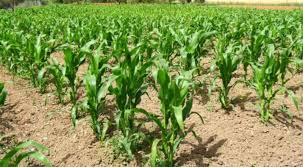Crab apple
Crab apple farming, also known as crab apple orcharding, involves the cultivation of crab apple trees for various purposes, including the production of fruit, ornamental purposes, and even for cider production. Crab apples (Malus spp.) are small, tart apples that are typically less than 2 inches in diameter.
Here are some key aspects to consider when it comes to crab apple farming:
Click on the link 🔗🖇️👇
https://daniblogs.com/BF/607328ob
Site selection: Choose a location with well-drained soil, preferably loamy soil with good fertility. Ensure that the site receives adequate sunlight, as crab apples require at least six hours of direct sunlight per day.
Variety selection: There are numerous crab apple varieties available, each with different characteristics such as fruit size, flavor, and ornamental value. Select varieties that align with your farming objectives, whether it's for fruit production or ornamental purposes.
Planting: Plant crab apple trees in early spring or fall, when the soil is workable. Ensure proper spacing between trees to allow for good air circulation and growth. Typically, spacing of 12 to 15 feet between trees is recommended.
Soil preparation and fertilization: Prepare the soil by removing any weeds, rocks, or debris. Conduct a soil test to determine nutrient levels and pH, and make any necessary amendments based on the results. Apply organic matter, such as compost, to improve soil fertility. Follow the specific fertilization recommendations for crab apples based on your soil conditions.
Irrigation: Crab apple trees require regular watering, especially during dry periods. Adequate irrigation is crucial for fruit development and tree health. Provide enough water to keep the soil consistently moist but not waterlogged.
Pruning and training: Prune crab apple trees during the dormant season to remove dead, diseased, or crossing branches. Pruning helps improve tree structure, airflow, and fruit production. Additionally, training young trees by guiding their growth can help develop a strong framework for future production.
Pest and disease management: Like other apple trees, crab apple trees can be susceptible to pests and diseases such as apple scab, fire blight, aphids, and codling moth. Implement integrated pest management strategies, which may include regular monitoring, cultural practices, and targeted pesticide applications if necessary.
Harvesting: Crab apples are typically harvested in late summer or early fall when they reach maturity. Depending on the variety, the fruit can be used for fresh consumption, cooking, or making cider. Harvest the fruit carefully to avoid damaging the trees.
Marketing and utilization: Determine your target market and develop a marketing strategy accordingly. Crab apples can be sold directly to consumers, used in value-added products like jams or jellies, or even utilized for ornamental purposes such as floral arrangements.
Remember to consult local agricultural extension services or experts in your area to get specific recommendations tailored to your climate, soil conditions, and local regulations. They can provide valuable insights and guidance for successful crab apple farming.




Comments
Post a Comment